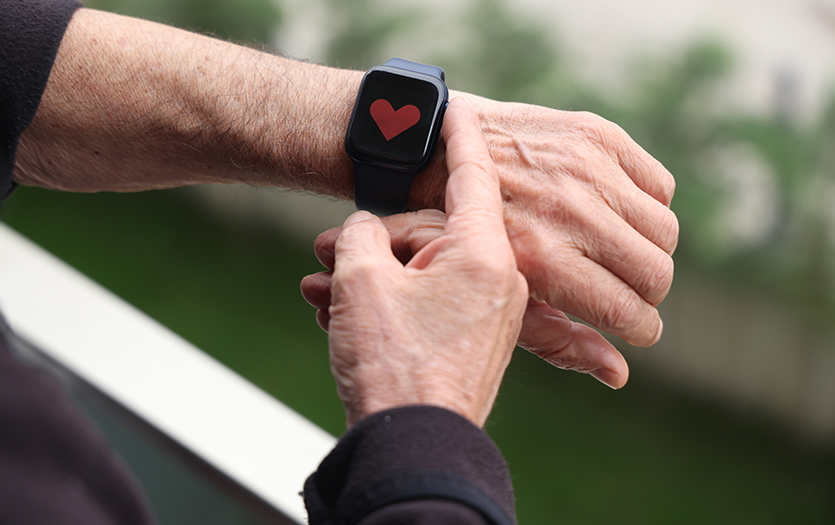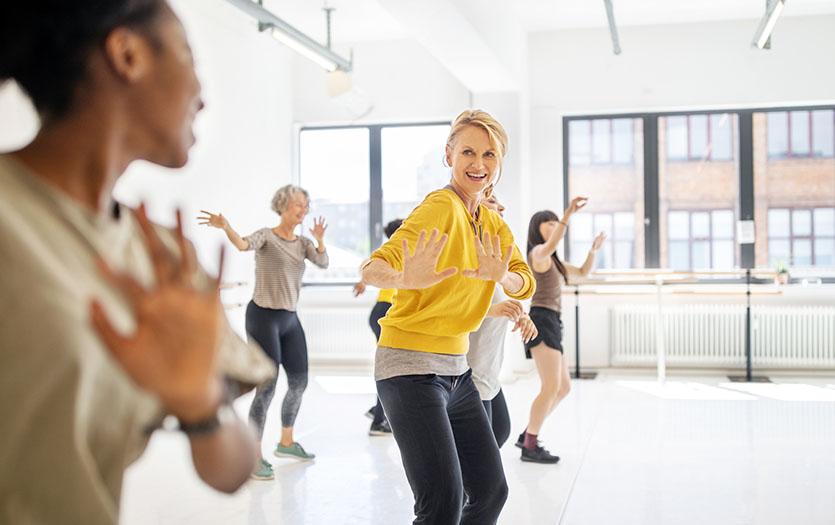
This post was written by Jessica Escobar-MacDonald, MSN, FNP-C, BC-ADM, Parkview Endocrinology, Certified Group Fitness Instructor through AFAA (Athletics and Fitness Association of America)
We’re right on the brink of the holiday season, and approaching the end of the year often gets us thinking about fitness goals. Maybe it’s the ambitions we had for the current year, or the ones we want to set for the year ahead. We get caught up on the fact that we started too late or that we need to start on a certain date. These considerations get more complicated when we factor in the presence of a chronic health condition as well. But what if there’s an alternative? What if I told you that the best time to start moving, even if you’re living with a disease, is right now! In this post, I’ll try to convince you to start an exercise plan in a safe and effective way.
Important note: If you are living with a chronic condition, such as diabetes, hypertension, heart disease, chronic pain, etc. talk to your primary care provider or specialist before beginning a new workout regimen.
What kind of exercise is right for you?
Aerobic, strength building, balance and stretching are different types of exercise that work your whole body. Within each approach, there are a number of styles of activities that may be right for you. Both the American Diabetes Association and the American Heart Association recommend a minimum of 150 minutes a week of moderate intensity or 75 minutes of vigorous activity spread out throughout the week and strength training 2-3 times a week.
Aerobic – Also known as “cardio,” aerobic exercise can include walking, jogging, dance classes, swimming or various machines that can be done at home or a fitness health center. Aerobic exercise can help lower blood sugar, improve blood pressure, burn body fat, reduce inflammation and boost mood.
Strength training – As we age, the body will start losing muscle mass and strengthening exercises can help build it back. You can use weight machines, free weights, bands or body weight such as squats, push-ups or lunges, to name a few. Strength training has similar benefits as aerobic exercise, and can also improve balance and posture, stimulate bone growth and make you stronger! If you are new to strength training, it is very important that you work with a personal trainer or speak with someone who can help you develop a plan that is safe and right for you.
Balance – Improving your balance can help you feel steadier on your feet and prevent falls. A lot of exercises incorporate balance elements, but yoga, Pilates or Tai Chi will focus more on the areas of core development and balance. Many fitness centers also offer balance and stretching group fitness classes with certified instructors that are targeted at seniors. If you have known balance issues, work with a physical therapist to develop a plan using assistive devices such as a chair or a wall to provide a safe environment while working on balance.
Stretching – Aging can lead to a loss of flexibility in our muscles and tendons, so it’s important to work stretching into your daily routine or at least 3-4 times a week.
Your body on exercise
Blood glucose is expected to come down with activity, and more so with aerobic exercise because the body is using up energy. With the use of continuous glucose sensors, patients can see in real time that glucose is dropping with the increase in activity. If you have diabetes, always carry rapidly absorbed carbohydrates such as glucose tablets or gel to treat low sugar.
Some patients, however, report that their glucose does not go down as expected and at times may rise. First, not all calories from various foods are created equally and they will be used up by the body for energy at different speeds. A dietitian is the most indicated professional to develop a meal plan around your activity level and specific health circumstances.
One thing to note is that if exercise is creating stress or causing the body to hurt, glucose may rise during or after exercise. This is why it is very important that when you are starting any exercise program you discuss it with your medical provider.
What equipment will I need?
Shoes – Having the proper footwear for movement is so important! There are so many different styles and types of athletic shoes for varying activities. A cross-training shoe would be a good initial purchase because it is designed for multi-directional movement and can provide a greater range of motion. These shoes have a flatter sole that can make them more flexible for activities such as group fitness classes or weight training. Knowing the right size and width for your feet is also critical. Please look for a running shoe store or footwear specialty store that can measure your foot and assess your foot strike to help you identify the best style for you.
A wearable – A smartwatch that measures your heart rate would also be helpful. Ask your medical provider if there are limitations or guidelines regarding your heart rate and if there are medications that can affect your heart rate during exercise. It is important to establish your resting heart rate and what is a safe heart rate to achieve during various exercises.
Glucose sensor – A continuous glucose sensor or monitor can be very helpful in preventing low sugar episodes during exercise.
Where should I exercise?
Exercising does not have to cost you anything. You can exercise in your own home and if you have internet and a computer, you can look up dance fitness classes or even walking exercises that you can do indoors. Walking outside is an option while the weather cooperates but have a plan for poor weather days as well. Many communities have small fitness centers that could be affordable, the YMCA offers discounted prices for people who qualify, some Medicare plans offer silver sneakers at no cost for seniors or there are facilities such as Turnstone that open their warm water pool and indoor track for the community at a lower cost.
When should I start?
The right time is the day you get the green light from your medical provider. Don’t overthink it. Find an activity that is enjoyable and safe for you that doesn’t feel like a chore. Set the time aside for your physical and mental health because you matter and your body will thank you.
Sources



